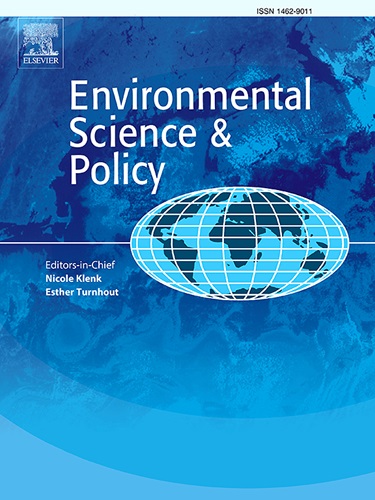Opportunities to better integrate inland fish and fisheries in multilateral environmental agreements
IF 5.2
2区 环境科学与生态学
Q1 ENVIRONMENTAL SCIENCES
引用次数: 0
Abstract
Inland fish and fisheries are globally important to environmental function and human services, yet their persistent lack of recognition in global agreements, especially multilateral environmental agreements (MEAs), may hinder progress towards biodiversity conservation and human well-being. The connection between inland fish, fisheries, and their ecosystems means that addressing the needs of fish directly offers opportunities to meet multiple global commitments and provide indicators of progress towards many global goals. In this perspective, we highlight opportunities to better integrate inland fish and fisheries into MEAs, specifically the Convention on Biological Diversity (CBD), Convention on Wetlands (commonly known as the Ramsar Convention), Convention on Conservation of Migratory Species (CMS), Convention on International Trade in Endangered Species of Wild Fauna and Flora (CITES), and World Heritage Convention (WHC). Greater attention on inland fish and fisheries through MEAs could help ensure more holistic planning, investment, and conservation of these important fish and fisheries, their biodiversity, the essential resources they provision, and the environments they inhabit.
将内陆渔业和渔业更好地纳入多边环境协定的机会
内陆鱼类和渔业在全球范围内对环境功能和人类服务具有重要意义,但它们长期得不到全球协定,特别是多边环境协定的承认,可能阻碍生物多样性保护和人类福祉方面的进展。内陆鱼类、渔业及其生态系统之间的联系意味着,直接解决鱼类需求为实现多项全球承诺提供了机会,并为实现许多全球目标提供了进展指标。从这个角度来看,我们强调了更好地将内陆鱼类和渔业纳入多边环境协定的机会,特别是《生物多样性公约》(CBD)、《湿地公约》(通常称为拉姆萨尔公约)、《迁徙物种保护公约》(CMS)、《濒危野生动植物种国际贸易公约》(CITES)和《世界遗产公约》(WHC)。通过多边环境协定更多地关注内陆鱼类和渔业,有助于确保更全面地规划、投资和保护这些重要的鱼类和渔业、它们的生物多样性、它们提供的基本资源和它们居住的环境。
本文章由计算机程序翻译,如有差异,请以英文原文为准。
求助全文
约1分钟内获得全文
求助全文
来源期刊

Environmental Science & Policy
环境科学-环境科学
CiteScore
10.90
自引率
8.30%
发文量
332
审稿时长
68 days
期刊介绍:
Environmental Science & Policy promotes communication among government, business and industry, academia, and non-governmental organisations who are instrumental in the solution of environmental problems. It also seeks to advance interdisciplinary research of policy relevance on environmental issues such as climate change, biodiversity, environmental pollution and wastes, renewable and non-renewable natural resources, sustainability, and the interactions among these issues. The journal emphasises the linkages between these environmental issues and social and economic issues such as production, transport, consumption, growth, demographic changes, well-being, and health. However, the subject coverage will not be restricted to these issues and the introduction of new dimensions will be encouraged.
 求助内容:
求助内容: 应助结果提醒方式:
应助结果提醒方式:


